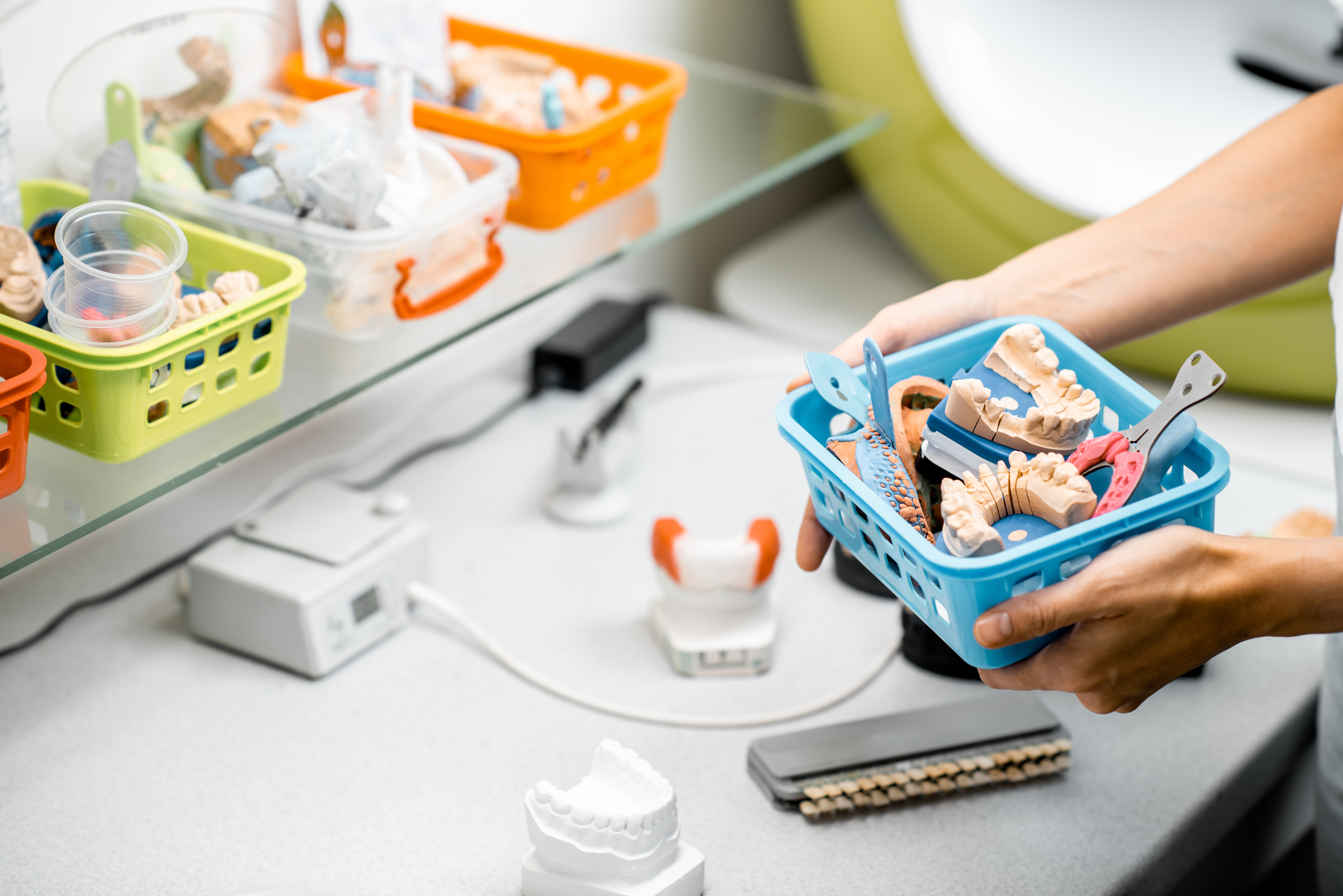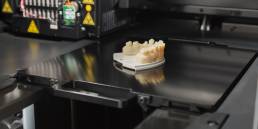Occlusal Scheme Design for Full-Arch Restorations: Balancing Function and Esthetics

Dental labs play a pivotal role in delivering full-arch restorations that provide long-term functionality and esthetics. The skill in occlusal scheme design ensures restorations are individually tailored, balancing bite forces, longevity, and natural appearance.
Understanding Functional vs. Esthetic Priorities from the Lab Perspective
Labs must often navigate the choice between functional occlusion, which focuses on ideal load distribution, longevity, and minimal stress on components, and esthetic occlusion, which emphasizes natural appearance and smile harmony. The lab’s collaboration with clinicians ensures that patient-specific priorities, medical history, and expectations guide the choice of scheme for each case.
Choosing the Right Occlusal Scheme for Full-Arch Restorations
Selecting the appropriate occlusal scheme is foundational. For implant-supported cases, mutually protected occlusion and group function occlusion are commonly preferred to reduce stress on implants and prostheses. For tooth-supported dentures or overdentures, schemes such as cusp–fossa or bilaterally balanced occlusion may be more suitable. Treatment plans are individualized based on arch form, opposing dentition, patient comfort, and parafunctional habits.
Digital Design Tools Labs Use for Precise Occlusal Mapping
The evolution of digital dentistry allows labs to utilize advanced occlusal analysis systems, AI-enhanced design platforms, and virtual articulator software. These tools simulate jaw movements, Inter Arch relationships, and force distribution—allowing precise occlusal adjustments before fabrication. Three-dimensional visualization and cloud-based collaboration streamline workflows, leading to faster and more predictable results.
Managing Inter Arch Relationships and Vertical Dimension in Lab Workflows
Restorative success depends on accurate management of the vertical dimension of occlusion (VDO) and Inter Arch relationships. Labs employ digital facebows, intraoral scanners, and digital wax-ups to maintain natural facial support, phonetics, and functional efficiency. Preserving existing VDO and re-establishing lost vertical dimension are critical steps, especially in full-arch cases.
Designing to Minimize Parafunctional Stress and Material Wear
Bruxism, clenching, and other parafunctional activities put restorations at risk of fracture or early wear. Labs work with clinicians to identify risk factors and choose occlusal schemes and materials that resist high stress. Digital sensors and occlusal analysis platforms help create contact patterns that distribute forces evenly, protecting both prosthetics and natural structures.
Customizing Occlusion for Implant-Supported vs. Tooth-Supported Arches
Implant-supported restorations lack periodontal ligament proprioception and should avoid excessive lateral contacts. Schemes like group function or light, evenly distributed contacts are favored. In contrast, tooth-supported arches tolerate steeper guidance and can maintain more traditional occlusal patterns. Lab protocols adjust occlusal surfaces, guidance angles, and canine support based on the support type and overall biomechanics.
CAD/CAM Integration: Translating Occlusal Plans to Final Prostheses
CAD/CAM technology allows labs to directly translate digital occlusal designs into precise, reproducible prostheses. Custom occlusal schemes are transferred from digital articulators to milled or 3D-printed restorations, ensuring minimal deviation from the original plan. This integration, along with open-architecture design software, supports workflow consistency and quality control.
Verification and Adjustment Protocols Before Delivery
Prior to insertion, labs recommend and often fabricate verification guides or try-in prototypes. These allow clinicians to assess occlusal contact, esthetics, and function in the patient’s mouth. Final adjustments are made using articulating paper, digital sensors, and clinician–lab feedback loops, reducing post-delivery complications and ensuring long-lasting results.
Ensuring Predictable Function and Esthetic Outcomes Through Lab Expertise
By leveraging advanced digital design, precise occlusal analysis, and strong communication with clinicians, dental labs are at the forefront of delivering full arch restorations that balance esthetics and function. Integrating patient needs, innovative technology, and robust lab workflows ensures restorations that not only look beautiful but also perform predictably for years to come.
Latest News
October 25, 2025
Intraoral Scanning Advances Every Dentist Should Know in 2025: Full-Arch Implant Restoration Insights for Dental Labs
Advances in intraoral scanning, optimized scan protocols, and lab-driven validation provide clinicians and dental labs with powerful tools for excellence in 2025.
September 26, 2025
Optimizing Full-Arch Implant Restorations: How Lab-Driven Precision Improves Fit, Function, and Patient Satisfaction
Full-arch implant restorations are among the most rewarding yet demanding treatments in dentistry. Precision is critical because even the smallest misfit can compromise occlusion,…
September 16, 2025
Zirconia vs. E.max vs. PFM: How to Choose the Best Crown Material
With options like zirconia, E.max (lithium disilicate), and PFM (porcelain fused to metal), dentists and labs must weigh strength, esthetics, tissue response, workflow, and…
August 22, 2025
360Imaging Anatomic Guide for Rapid Full-Arch Rehabilitation
The 360Imaging Anatomic Guide™ is redefining full-arch implant therapy by uniting precision, speed, and prosthetic-driven planning.



